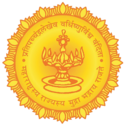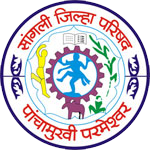Animal Husbandry Department
Department Related Information:
The Animal Husbandry Department is a government entity that plays a pivotal role in boosting the rural economy by enhancing the social prestige of individuals. Maharashtra has always been a progressive state with a significant share in livestock production. The Department of Animal Husbandry and Dairy Development has been at the forefront of contributing to the state’s development by taking care of livestock rearing, promotion, and overall development. Through various schemes, the department has brought about development and progress in rural areas. It has been instrumental in accelerating the economic cycle of rural Maharashtra by implementing initiatives related to animal husbandry. A key focus of the department is to create maximum industries and self-employment opportunities related to animal husbandry. In Sangli district, there are 152 Grade-1 and Grade-2 dispensaries that provide animal husbandry services at both the state and local levels. The department employs Livestock Development Officers, Assistant Livestock Development Officers, Livestock Supervisors, Dressers, and Peons to provide these essential services.
Introduction:
According to the livestock census of 2019, the total number of livestock in Sangli district is 14,03,633, which includes cattle, buffalo, sheep, and goats. The district is equipped with 152 category-1 and category-2 dispensaries at both the state and local levels to support animal husbandry services. The department employs a variety of personnel, such as Grade-1 Livestock Development Officers, Assistant Livestock Development Officers, Livestock Supervisors, Dressers, and Peons, to provide these services and ensure the health and well-being of livestock.
Vision and Objectives:
- Development and progress in rural areas through various schemes of the Animal Husbandry Department.
- Improvement in the standard of living for cattle rearers and farmers, providing employment and self-employment opportunities.
- Providing comprehensive health facilities for livestock.
- Implementing infertility prevention measures to enhance the reproductive rate of animals and increase production capacity.
- Distributing milch animals, goat units, poultry birds, and fodder seeds to rural farmers and needy beneficiaries, promoting livestock production and self-employment.
- Increasing the production of milk, eggs, meat, and animal products by safeguarding livestock from diseases and improving the availability of cattle feed and fodder.



